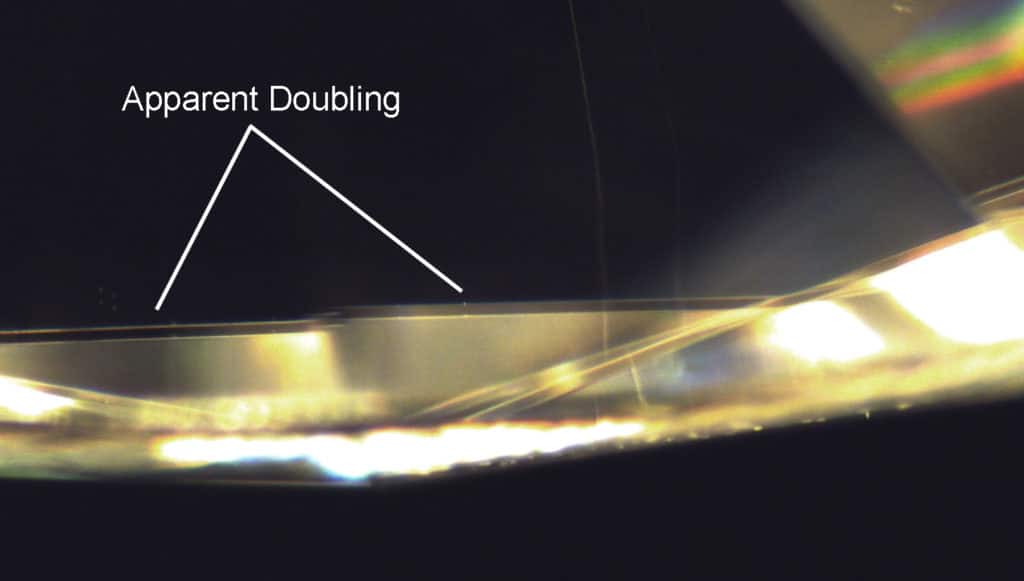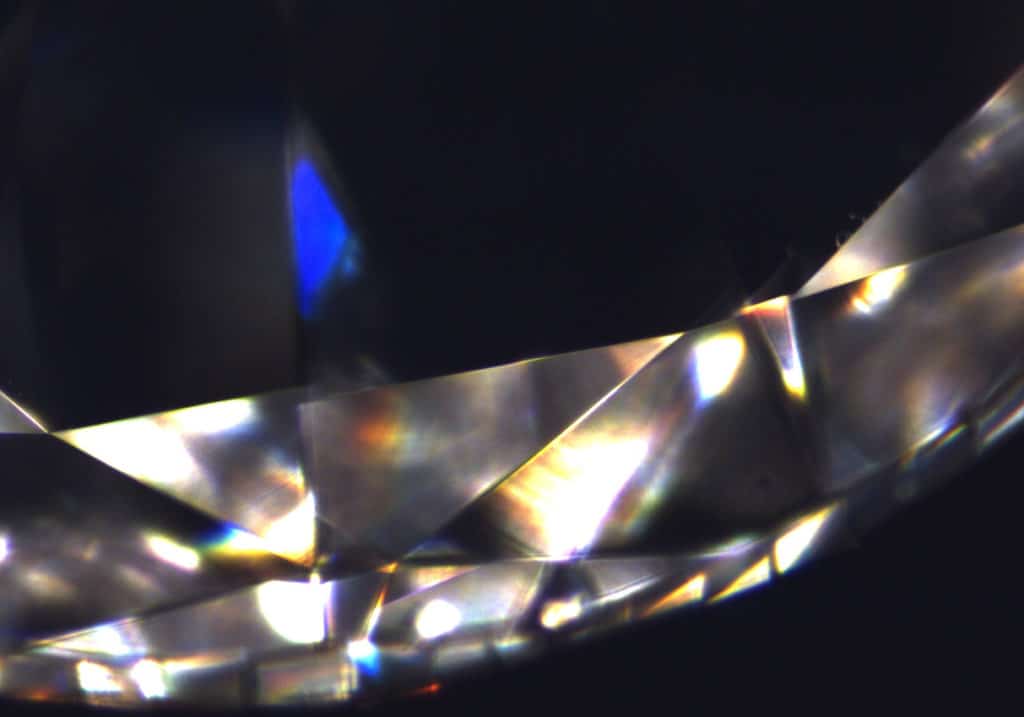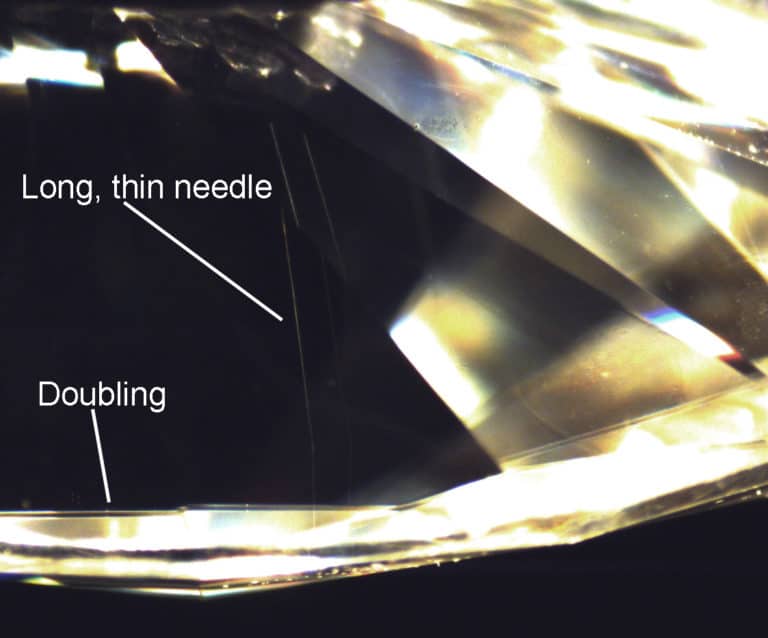By Wade Abel, CG, Director of Gemological Services, AGS Laboratories
It’s no secret that AGS Laboratories only grades diamonds. On the rare occasion, something may be submitted to the Lab for diamond grading that is not a diamond; instead, it is a diamond simulant. A diamond simulant is any material that could be used to imitate a diamond with different chemical properties.
There are safeguards in place at the Lab that alert us if something may not be a diamond before the gem goes through for any services. First, we do preliminary screening to see if the material could be something other than a diamond, or if a diamond may have been treated or could be laboratory grown.

Next, we continue testing with FTIR (Fourier Transform Infra-red) spectroscopy. This alerts us if a diamond needs further testing to determine treatment or natural origin, or determines if the material is not a diamond. When a diamond simulant is detected, we will notify the client that they sent something that we determined to be a material other than a diamond and are not able to complete the requested service. Since we do not grade or identify any other gemstones as a service, we do not reveal what we think they are.
Recently, the Lab received a gemstone that was caught by our system of alerts and determined to be a material other than a diamond. Occasionally, as in the case presented in this issue of “Under the Scope,” evidence that a gem is not a diamond can be observed in a scope or even a 10x loupe.
Doubly refractive material will create a double image by splitting the ray of light as it passes through the material. This is caused by birefringence, and we call this effect “doubling.” (Image 1) When we see this optical effect, it becomes evident that the material we are looking at is not a diamond. Diamonds are singly refractive, meaning they do not split light the way a doubly-refractive gem material would. (Image 2)
Another observation can be made with the inclusions in the gemstone. In this example, very long thin needle inclusions are observed. Diamonds sometimes exhibit needles as well, so the presence of these alone would not be indicative, however in combination with the doubling is evidence of what this gem could be. (Image 3) Our observations, combined with the spectrum from FTIR lead us to the assumption that this material is moissanite, a common diamond simulant.
Having a series of protocols in place helps ensure that our Lab provides the best possible service. Serving the industry with products and services based on science and providing a non-biased third-party assessment of what we see helps build trust with our clients. The experience of our advanced detection and grading teams also provides a layer of protection, through testing and observation, that helps detect everything from diamond treatments to diamond simulants.
Want to learn more about a specific subject in future issues? Email us your topic at [email protected]. Until then, stay curious about what you see “Under the Scope!”


